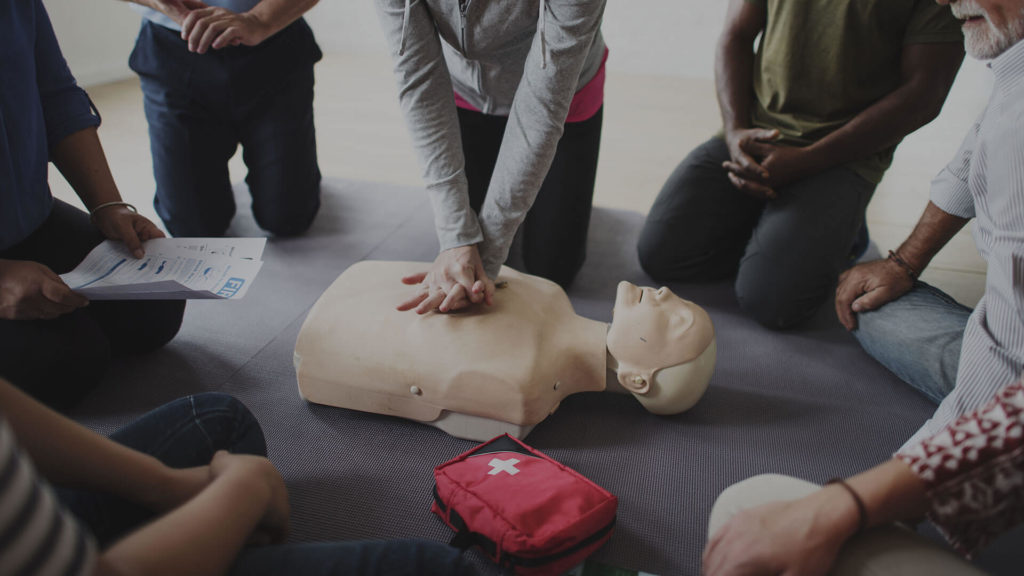
You Can Save a Life
The Sudden Cardiac Arrest Foundation has launched two educational campaigns to raise awareness and save lives threatened by sudden cardiac arrest.
The first campaign, You Can Save a Life at School, is targeted to stakeholders in secondary (junior and senior high) schools. It includes a mini-magazine which may be downloaded here.
The mini-magazine was named a finalist in the Western Publications Association 2009 Maggie Awards in the Best Supplement category. The cover story, “Saving Kaitlin,” by Laura McNeal, was named a finalist in the Best Public Service Series or Article category. The prestigious annual awards honor the best in magazine publishing. More...
The second campaign, You Can Save a Life on Campus, is targeted to stakeholders in colleges and universities. It includes a mini-magazine which may be downloaded here.
Ongoing updates for both campaigns are also available through Facebook, Twitter, LinkedIn, and the SCA Foundation's YouTube Channel.
You Can Save a Life at School
We see it in the news far too often: A student is at football practice, or playing lacrosse, or just walking to class when he suddenly collapses and dies from sudden cardiac arrest. When a tragedy like this happens, people often think there’s nothing they can do. But there is: Immediate treatment—before paramedics arrive—with cardiopulmonary resuscitation, or CPR, and an automated external defibrillator, or AED, gives the victim the best chance at life.
Schools exist for the purpose of preparing young people for life. Doesn’t it make sense that schools themselves should be prepared to save a life?
You Can Save a Life at School is more than the title of this publication. It represents the Sudden Cardiac Arrest Foundation’s message to schools nationwide: You have the power— and the moral responsibility—to protect the lives of your students, your faculty members, your staff and your visitors. With simple preparation, you can save a life at school.
This publication relates the story of Kaitlin Forbes, a student who suffered sudden cardiac arrest in gym class at her high school in Rhinebeck, N.Y. Kaitlin lived because of the preparation and quick actions of her teachers, school nurse and fellow students. But preparation often can be traced to tragedy: You’ll also read how Karen and John Acompora, after losing their son Louis to SCA at age 14, channeled their grief into a mission to help schools prepare to save lives. Their efforts helped save Kaitlin’s life.
Implementing an SCA program at your school isn’t difficult, but it does take work. The Sudden Cardiac Arrest Foundation makes it easier for you with useful information from successful school programs (check out “Building a Heart-Safe School”). You’ll also find helpful ideas and checklists throughout this website.
Why wait for a tragedy? Implement an SCA program at your school now. You may just save a life—and better yet, by teaching students lifesaving skills, you’ll help build a generation of citizens who are ready, willing and able to help whenever SCA strikes.

Is your school ready?
Download our PDF and take action today.
You Can Save a Life On Campus
Sudden cardiac arrest (SCA), a sudden and unexpected pulseless condition, strikes more than 1,000 people outside hospitals (including about 16 youths <18 years old) every day in the U.S.—and most victims die.
The odds of survival improve greatly when someone recognizes the emergency, decides to help, calls 9-1-1, starts CPR, and uses a defibrillator to shock the heart back to a normal rhythm.
So many more could survive if they were treated in time. SCA victims need to receive CPR and defibrillation within a few minutes of collapse to maximize the chances for neurologically intact survival. Yet only one-third of SCA victims receive bystander CPR and only 2% are treated with an automated external defibrillator (AED) by a bystander. When bystanders do intervene by providing CPR and using the nearest AED, survival rates increase from 8% to nearly 40%.
SCA Foundation spokesperson Susan Koeppen, an award-winning TV journalist and a wife and mother of three young children, understands this first-hand. She was running with friends in preparation for a marathon when she collapsed in SCA. Fortunately, two medical students came upon the scene at exactly the right time and they gave her CPR until firefighter-EMTs arrived, continued CPR, and used their defibrillator to restore Susan’s pulse.
“If it were not for the students and EMS who rushed to help me, I would not be here today,” said Koeppen. “I can’t stress enough the importance of learning CPR and how to use an AED.”
Colleges are microcosms of the community at large. As such, they should be prepared to prevent death and disability from SCA among students, staff and visitors. This includes ensuring that students are trained in CPR and AED use and that AEDs are strategically placed on campus and with athletic teams.

Is your college ready?
Download our PDF and take action today.
